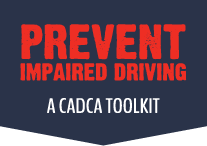Community Assessment — Data Collection About Impaired Driving
Community Needs Assessment — Data Collection Checklist
Data and Sources to Collect about Consequences and Problem Statements
1) Fatal and Injury Crash Data – National Highway Traffic Safety Administration) NHTSA: this is generally a more reliable indicator of the level and type of impaired driving in your state and community than arrest data, which is dependent on the level of local law enforcement resources to conduct enforcement campaigns. NHTSA sponsors a data resource website called the Fatal Analysis Reporting System (FARS) that has multiple databases that can be searched at the state and county levels. Go to this web address for the site map.
- Brochures
- Publications by Category
- National Automotive Sampling System (NASS)
- State Traffic Safety Info
- FARS Encyclopedia
- Traffic Safety Fact Sheets
- Traffic Safety Facts Annual Report
2) Highway Safety and Crash Data – State Offices of Traffic Safety – You can also search the databases for information your state offices of highway safety. They may break information by your county/city. If you don’t find what you need online, contact information is provided on each state office website:
- Alabama
- Alaska
- Arizona
- Arkansas
- California
- Colorado
- Connecticut
- Delaware
- District of Columbia
- Florida
- Georgia
- Hawaii
- Idaho
- Illinois
- Indiana
- Iowa
- Kansas
- Kentucky
- Louisiana
- Maine
- Maryland
- Massachusetts
- Michigan
- Minnesota
- Mississippi
- Missouri
- Montana
- Nebraska
- Nevada
- New Hampshire
- New Jersey
- New Mexico
- New York
- North Carolina
- North Dakota
- Ohio
- Oklahoma
- Oregon
- Pennsylvania
- Rhode Island
- South Carolina
- South Dakota
- Tennessee
- Texas
- Utah
- Vermont
- Virginia
- Washington
- West Virginia
- Wisconsin
- Wyoming
- Governors Highway Safety Association
3) Cost of Deaths From Crashes – The Centers For Disease Control and Prevention (CDC) have compiled this information by state.
4) Community-Level Crash Data – local law enforcement, fire department/paramedics, hospitals may share information about days, times of day, times of year and location trends for impaired driving crashes.
5) Local information about impaired drivers* – from local police, probation, court or health/treatment
- Numbers of first time and multiple offenders
- Demographics about first time and multiple offenders: age, gender, ethnicity, census/tract or other residence information (e.g., city, zip code)
* Note that special care is taken to respect compliance with laws that safeguard individual privacy (e.g. HIPAA laws about medical records). Coalitions should receive information aggregated according by the above categories, so that no specific individuals are identified.
Data and Sources to Collect about Root Causes and Local Conditions
1) Number and Density of Licensed Drinking Establishments – your state alcoholic beverage control board or liquor commission can provide information about the number, type and location of establishments that provide beer, wine and/or distilled spirits for consumption on their premises in your community.
2) Identification of Other Locations Where Drinking/Drug Use Occurs
- Local law enforcement alcohol and drug arrest, incident report and calls for service data
- Key informant interviews
- Focus groups with youth
- Focus groups with neighborhood residents and other adults
3) “Circumstance of Last Use/Drink” self-report surveys – to get further information about settings and circumstances, some law enforcement agencies, DUI/DWI program providers and/or county health offices collect data from people arrested for impaired driving about the last place they used before driving. Although we know that there is limited accuracy in this kind of self-report, many communities have discovered patterns in the results about locations (licensed alcohol establishments, parks, private parties, etc.) that have helped direct decisions about times and places for sobriety checkpoints, saturation patrols, undercover operations to stop sales to intoxicated patrons and other targeted enforcement efforts.

